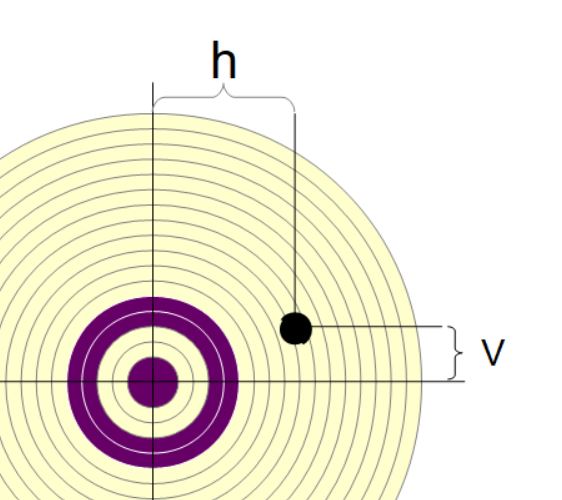The Miller Twist Rule calculates the optimal barrel twist rate for stabilizing a bullet's flight given the bullet's diameter, length and mass. The resulting twist rate is the length in which the rifling of the barrel will make one full rotation.
INSTRUCTIONS: Choose units and enter the following:
- (D) Bullet Diameter
- (L) Bullet Length
- (m) Mass of Bullet
Optimal Barrel Twist Rate (TR): The calculator computes the length for one complete rifling rotation in inches. However this can be automatically converted to other length units via the pull-down menu.

Firearm Calculators
- Sectional Density: Computes the factor used in the computation of the ballistic coefficient called sectional density.

- Bullet Ballistic Coefficient: Computes factor that represents a bullet's ability to overcome air resistance in flight.
- Ballistic Coefficient from Bullet's Mass, Diameter and Form Factor: Estimates the ballistic coefficient from the mass, diameter and form factor
- Miller Twist Rule: Computes the optimal barrel twist rate for stabilizing a bullet's flight given the bullet's diameter, length and mass.
- Taylor Knock-out Factor: Calculates a factor indicating the power of a round,.
- Greenhill Formula for Optimal Rifling Twist Rate: calculate the optimal barrel twist rate for stabilizing a bullet's flight given the bullet's diameter, length, specific gravity and velocity.
- Bullet Flight Range: Computes the maximum range (horizontal distance) traveled by a bullet based on the muzzle velocity, elevation angle and shooter height.
- Muzzle Energy of a Projectile: Calculates the kinetic energy in a bullet immediately after leaving the barrel given the bullet's mass and velocity.
- Recoil Velocity of a Gun: Computes the velocity at which a gun will move in the opposite direction in relation to the projectile that it fired.
- Cost per Round: Computes cost per round of ammunition based on the cost of a container of cartridges and the number of rounds in the container.
 Rifle Sight Correction Angles: Computes the Minutes of Angle corrections for rifle sights.
Rifle Sight Correction Angles: Computes the Minutes of Angle corrections for rifle sights.- Shotgun Shell Reloading Cost: Computes the cost to reload used shotgun shells (hulls) with powder, shot, wads and primers.
- Shotgun Shell Loading Cost: Computes the cost to load new pre-primed shells (hulls) with power, shot and wads.
- Metal Ball Weight: Computes the mass (weight) of a spherical metal (e.g., steel) ball based on the size (diameter).
- Metal Cylinder Weight: Computes the mass (weight) of a metal cylinder based on the size (diameter and length).
The Math / Science
The Twist Rate is commonly written as a ratio. Some common rifling ratios are 1:7, 1:9, 1:36, where 1:7 corresponds to 1 turn in 7 inches.
Here is an interesting article on why proper bullet stabilization matters: http://www.ammoland.com/2017/02/ar-15-barrel-twist-rates-you-need-to-know/#axzz4alKeEk8o
References
Further Information: